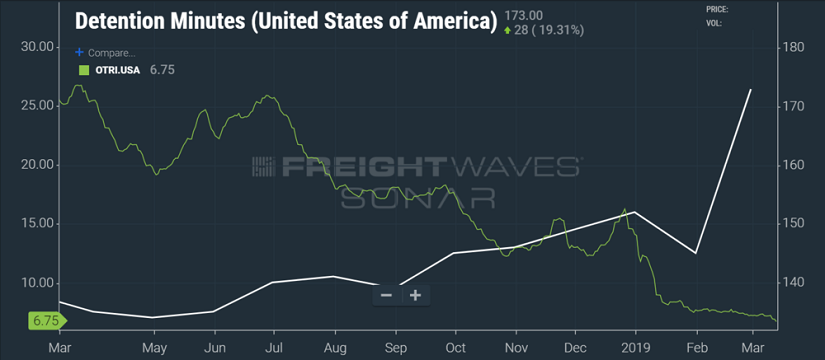Shippers are back to their bad detention habits, according to a leading source. Industry data gathered by FreightWaves shows loading and unloading times are increasing. At the same time, many carriers are accepting a larger percentage of these loads despite the longer wait times. With the freight market balancing out and capacity loosening up, it seems shippers are reclaiming some of the power they lost after the capacity crunch of 2017-2018.
Don’t get cocky, kid.
They shouldn’t get too cocky, though. While the economy is expanding slower than a year ago, it’s still growing—and growing faster than the supply of truck drivers at that. Even if freight demand tapered off in the first quarter, that can (and will) change. There are still times of the year, like the spring and winter retail season, where demand surges. This means shippers will still be tasked with finding available trucks and drivers, as carriers run smack into their limits—and everybody will be in the same situation as last year.
If there’s anything shippers and carriers should have learned from the past 18-months, it’s this:
Long detention times are the single worst thing for an industry vulnerable to capacity constraints.
Detention affects other issues
What’s the effect? Slowing down the free movement of freight, wasting valuable time, and draining the industry of billions of dollars, to start. But detention permeates to other issues exacerbating capacity limits, such as driver shortage, retention, and HOS regulations.
As the market enters a period of stability, the time is now for carriers and their customers to have a frank conversation with each other. They should discuss ways to address inefficient detention processes before things tighten up again. Carriers still have the leverage to go back to shippers that got dinged in 2017-2018. They can discuss how both parties can find ways to move freight more efficiently and save money. This is no easy task, but those who don’t’ try to collaborate together can expect another year of increased transportation costs and reduced revenue.https://go.spireon.com/l/900661/2020-11-24/nfd/900661/16062754907Cj4OS1p/FL_FAI_DetentionWebinar_WhitePaper_Company_0319.pdfIn this three-part blog series, we’ll analyze the underlying factors that led up to the capacity crunch of 2018. We’ll also outline ways in which carriers and shippers can work together to speed up the supply chain clock. Look for part 2 of this series next week. In the meantime, get more info on detention and how you can manage it in our new free white paper, Detention Time Is Money; How to Extract Greater Upside in a Super-Hot Market.

